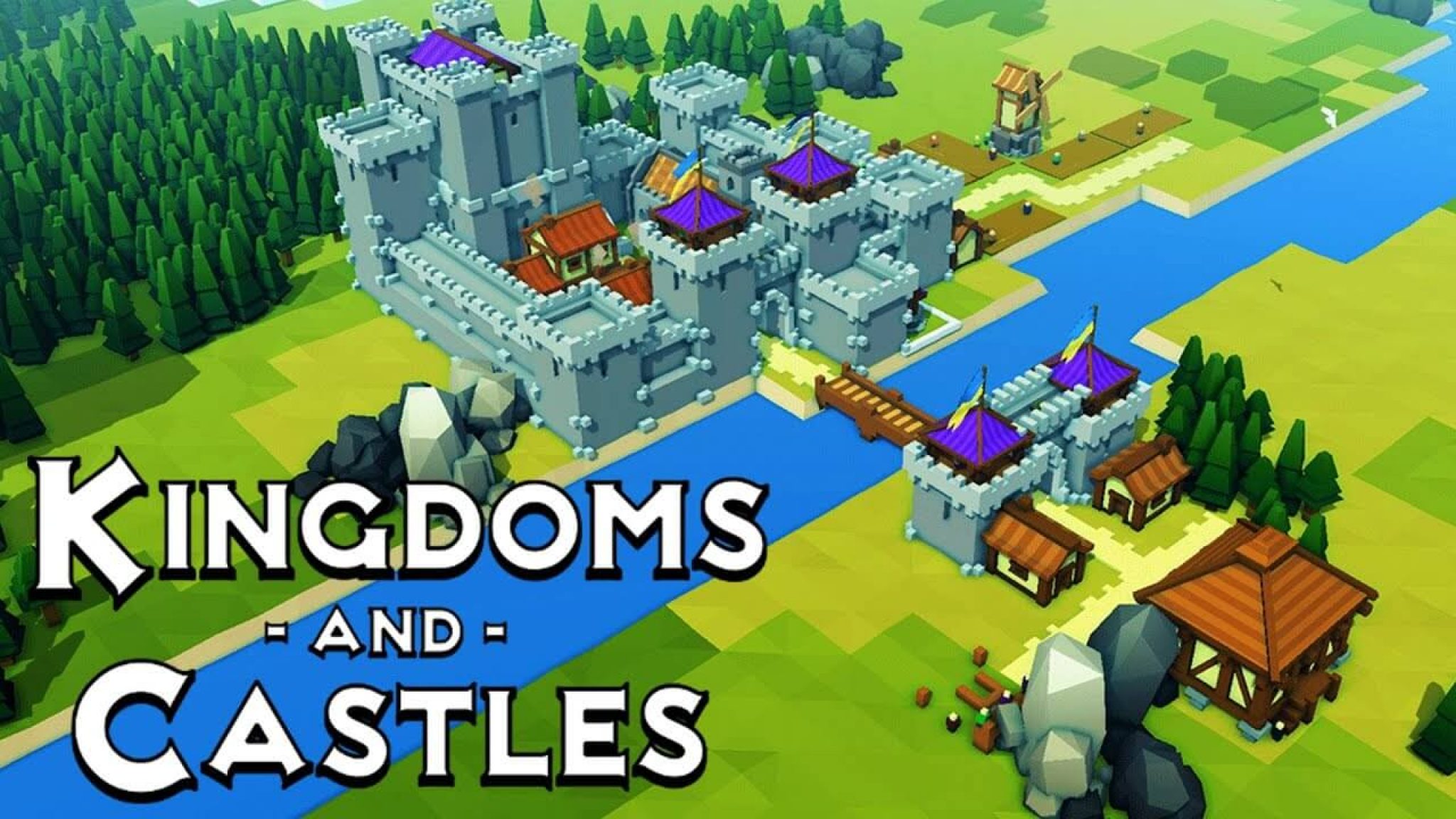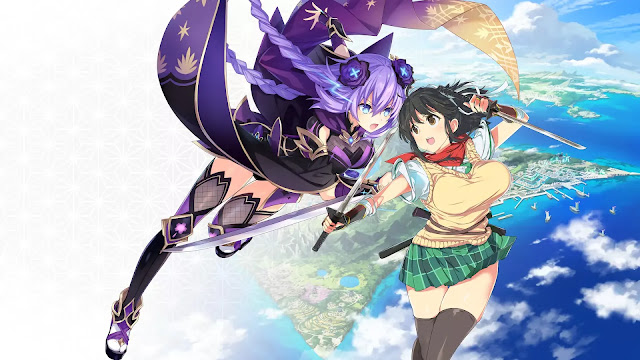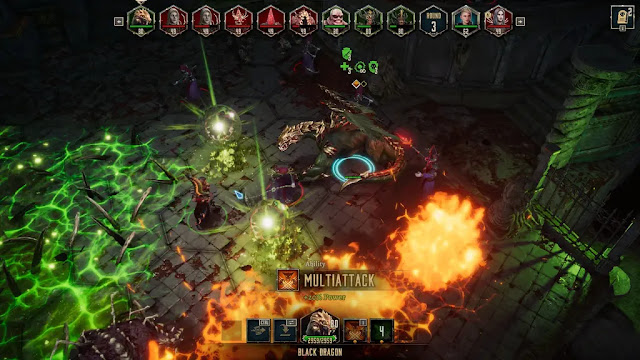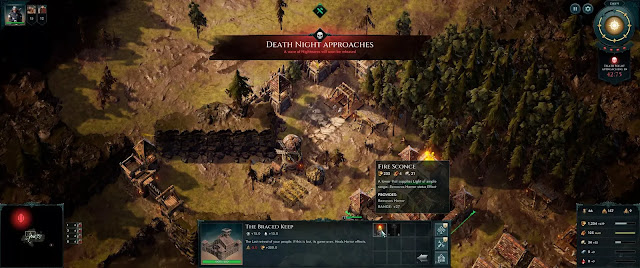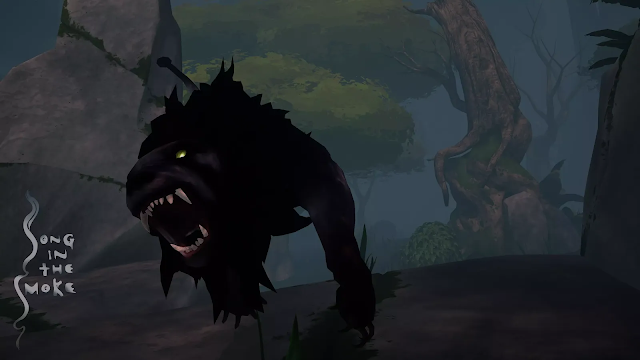Defend
The Rook by developer One Up Plus Entertainment and publishers Goblinz
Publishing and Maple Whispering—PC review written by Hayden
with a copy provided by the publisher.
Estimated reading time: 5 minutes
Defend The Rook by developer One Up Plus Entertainment and publishers Goblinz Publishing and Maple Whispering bills itself as “a roguelike tactics board combat combined with tower defense elements.” Beyond operating on a grid and being turn-based, however, there really isn’t much roguelike here - no permadeath or procedurally generated endless dungeon levels await us here. Instead, Defend The Rook welcomes players into a series of playing fields that strongly resemble chess boards with terrain blocks, and gives them control of exactly four moveable pieces - the eponymous castle-like Rook, and three nameless heroes known simply as the Warrior, Rogue and Sorceress.
Gameplay is turn-based, with no timers or other restrictions to hurry the player along on the default setup. Each piece can move and attack by default, and the player can use a few off-board actions to help their pieces and hinder opponents. The player wins by surviving through multiple waves of enemy pieces, and loses if the enemy manages to destroy the Rook - simple, straightforward and easy to grasp conditions.
While some of the off-map actions the player can perform can place static AI-controlled towers, traps and barricades, there are never enough of these provided that any meaningful portion of the map can be turned into a maze like a true tower defense game. To further drive home the point that this is not a tower defense game, barricades and towers placed by the player are open to attack by enemy units - a direct difference from most tower defense games where the attackers mindlessly shamble like cattle between the players walls.
One Up Plus’s game design hits an interesting note in how they have made the player’s pieces synergize together. Each piece starts with at least one special effect, and more can be unlocked as the player progresses. Often, these effects are positioning-dependent - like a character healing adjacent static structures (towers, barricades) when they end their turn next to them - which gives a refreshing extra layer to a game that would otherwise risk devolving into “move next to the enemy, smash, end turn, repeat”.
My only gripe with this system is that the abilities show up quite quickly at the start of the game and aren’t easily referenced on the game board, making it harder for a player to learn how to use their pieces to their best advantage. If this was a deliberate design choice, it isn’t one that I personally agree with, but it admittedly does force the player to pay close attention to what they are doing and rewards those who can hold onto a mental list of all the conditional abilities their pieces have.
The art style and UI design for Defend The Rook is generally quite clean and pleasant to look at. The majority of the player’s time will be spent looking at the chessboard-like battlefield in an isometric view, and a few issues inevitably spring from this style. Most notably, pieces and terrain can occlude items ‘behind’ them from the player’s perspective, and while the front piece turns translucent when the player mouses over the occluded piece, it is still possible to miss seeing a small enemy piece behind a larger sprite, or having the normally visible stat block hidden out of the player’s view. Given that the playing field is of quite limited size this isn’t often too bad of an issue as it is less likely the player will have lost track of a piece moving into an occluded position, but it is still an item worth noting.
In summary, Defend The Rook leans successfully into a mix of movement and interpiece synergies to keep players engaged with its turn-based action. Don’t expect the classic tower defense tropes of militarized mazes and mindless hordes of minions, however, as this plays more as an evolution of chess than a tower defense game. Good for players who want a lightweight tactics game, but avoid it if you are just looking to watch hundreds of peons march into your custom-built meat grinder. Overall a fun game to play, but I doubt it will make a lot of player’s ‘best of 2021’ lists as few of its features really stand out with a “wow” factor to make it truly memorable.
Summary
Defend The Rook leans successfully into a mix of movement and interpiece synergies to keep players engaged. Don’t expect the classic tower defense tropes of militarized mazes and mindless hordes of minions, however, as this plays more as an evolution of chess than a tower defense game. Great for players who want a lightweight tactics game, but avoid it if you are just looking to watch hundreds of peons march into your custom-built meat grinder.
Score: 7 / 10







